War and Victory
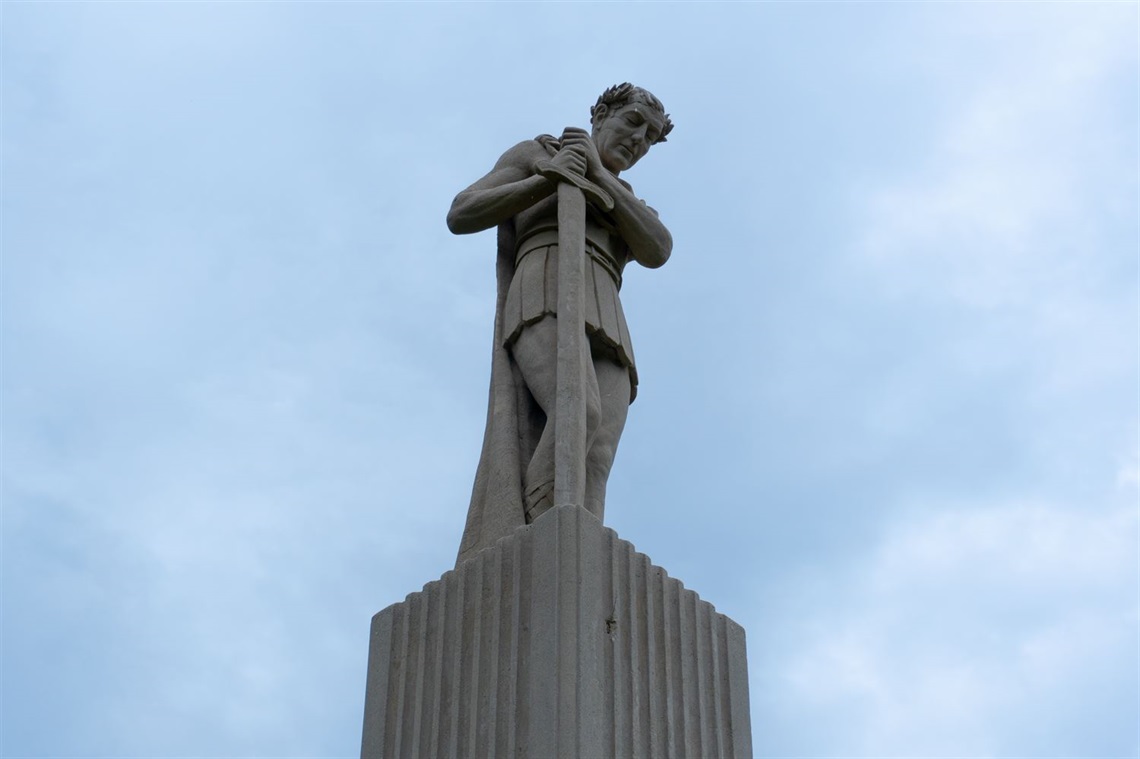
About the Sculpture
Located at Antelope Park and standing close to 30 feet tall, “War and Victory” by Ellis Luis Burman differs from other war monuments and other notable monuments in Lincoln.
Burman noted, “I was getting tired of seeing statues of Victory triumphant and exalted. Victory in war always means a tremendous loss to the victor as well as the vanquished, and, to me, a statue of Victory, isn’t true in spirit unless it tells the whole story.”
This resulted in his figure of Victory which sits at the top of the monument to appear tired, contemplative and mournful as he leans on his long sword. Around the base of the tower stand four figures, each representing a soldier from the four major conflicts that had occurred up until that point: the Revolutionary War, Civil War, Spanish-American War and World War 1. Burman noted that he wanted to be as detailed as possible but had to slightly improvise the Revolutionary War soldier’s uniform, as there was not a good example in the State Historical society to reference. Instead of adding additional ornamentation to the base and pillar, the four soldiers act as the decoration. The material of the memorial also sets it apart from other monuments. Burman’s work in Lincoln up until this point had been primarily made of cement, but for “War and Victory” he employed the use of crushed marble. The coarse material when mixed properly is comparable to limestone in durability and texture but can be poured into casts and molds like cement.
This sculpture was one of the WPA projects, and was, at the point of its creation, the largest sculptural piece that the WPA had commissioned. When the Great Depression (Great American Headache according to one Nebraska State Journal article from April 26, 1936), Burman had been a commercial artist, but the WPA provided him the opportunity to do the jobs and kind of art he wanted to.
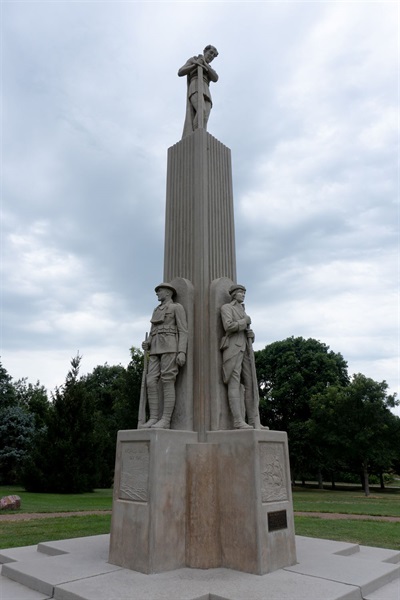
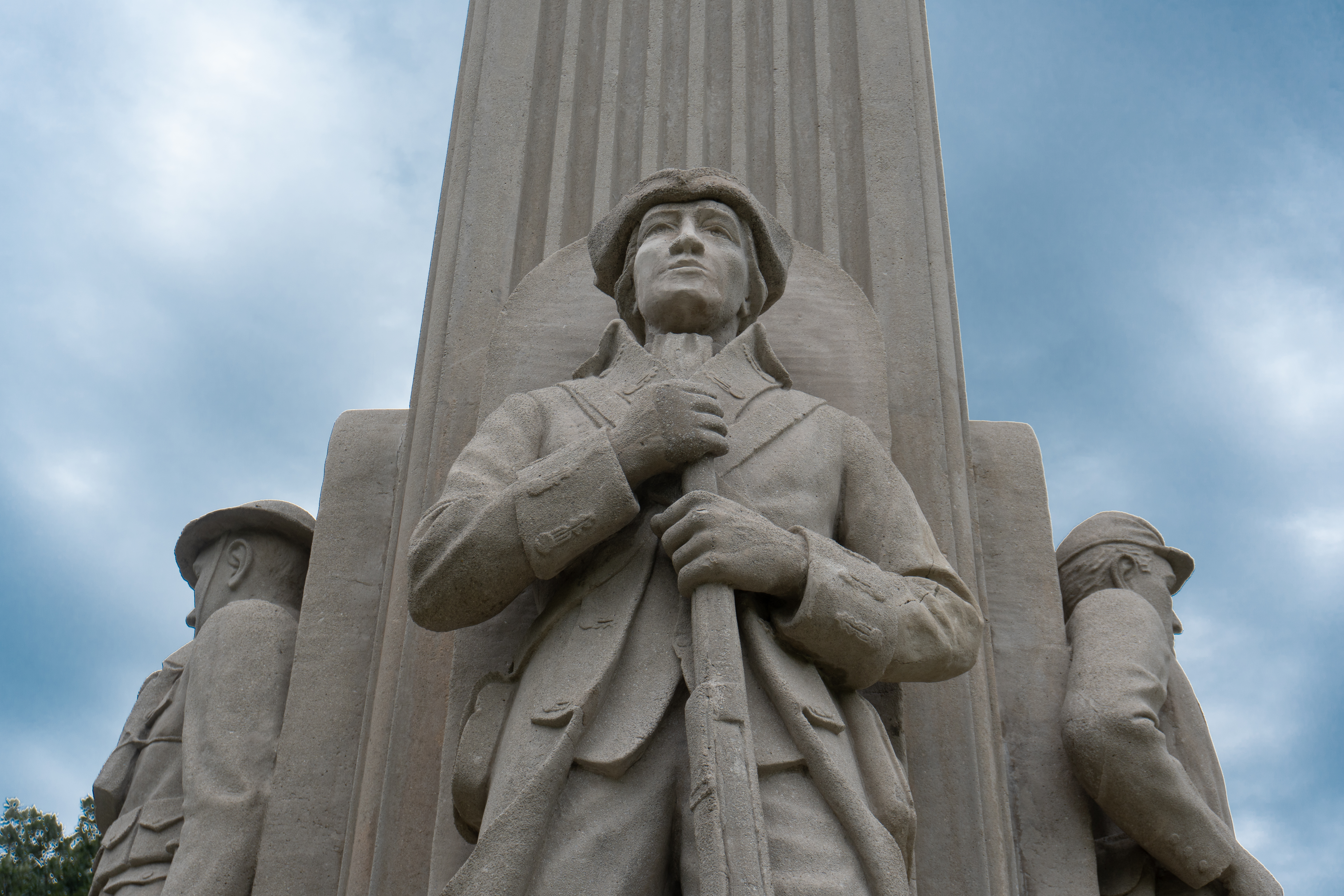
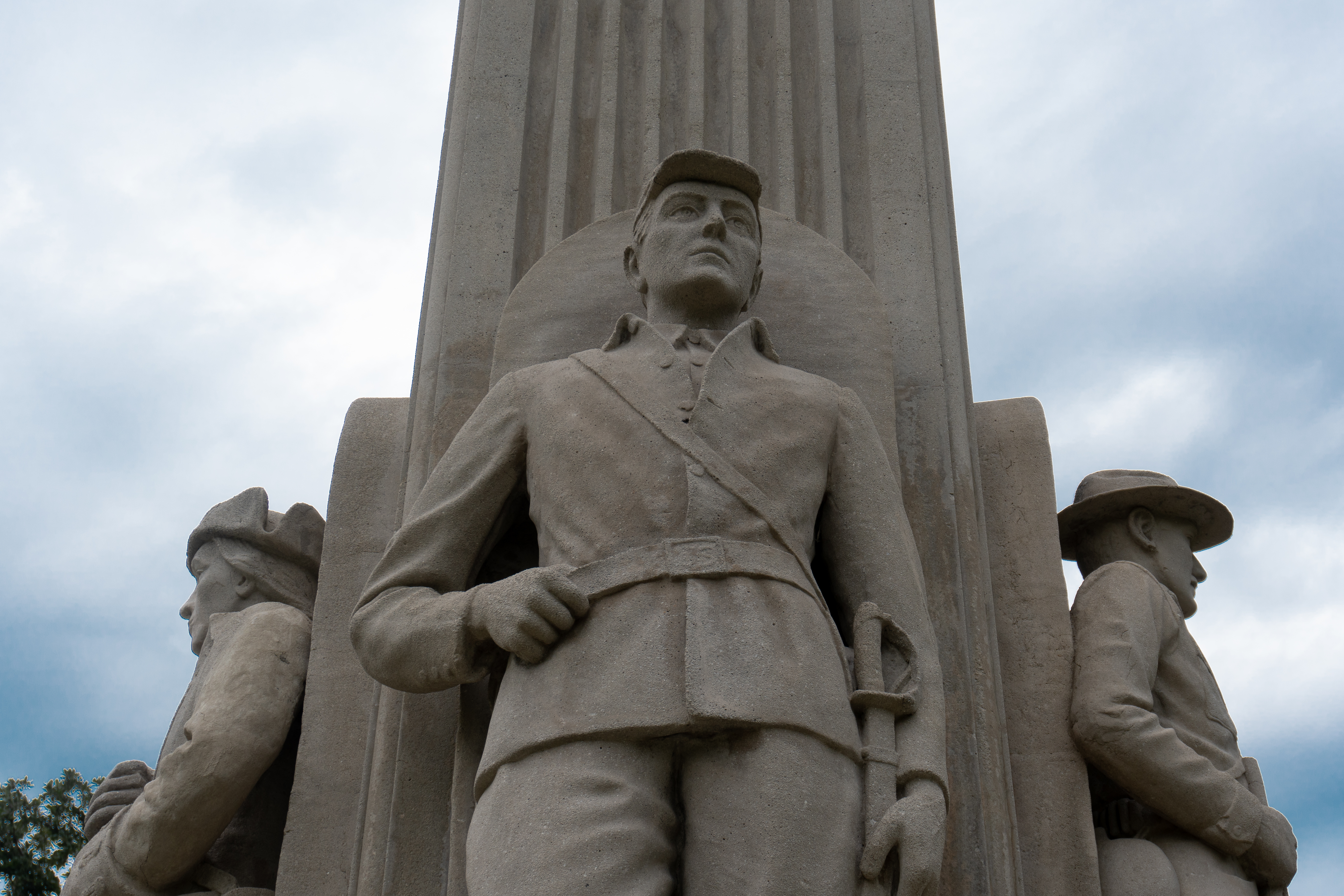
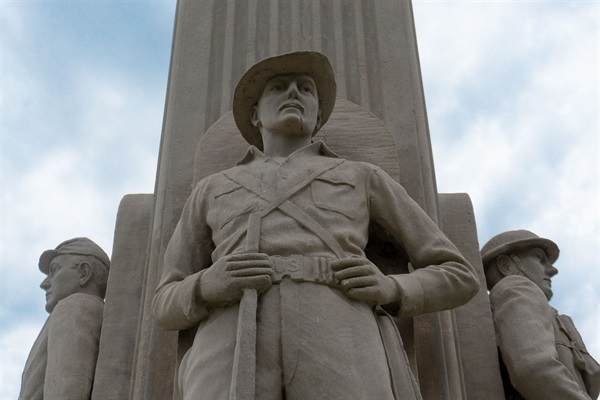
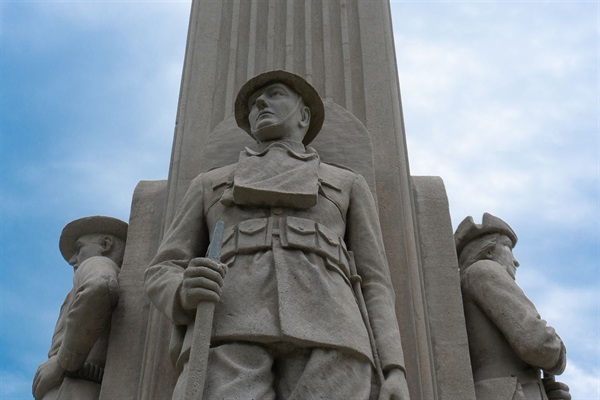
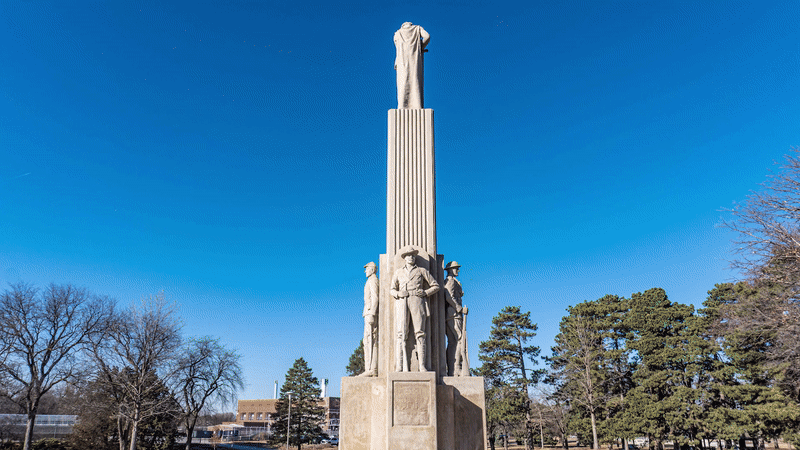
About the Sculptor Ellis Luis Burman
Born in 1902 in Toledo, Ohio, Ellis Luis Burman studied at the Art Institute of Chicago, but moved to Lincoln, NE with his wife around the 1930s. He worked predominately as a commercial artist at the beginning of his career. His first major sculptural project was a commission from the Lincoln Woman’s Club to honor the pioneer women who helped settle the west. During the Great Depression, Burman found work with the Works Progress Administration (WPA) or the Federal Emergency Relief Administration (FERA) to help beautify the city of Lincoln. During this time, he created several notable monuments. One being a memorial to the veterans of the state, known as “War and Victory”. His most well-known work was also created at this time, titled “The Smoke Signal” and was dedicated to all Nebraska Native Americans.
Though his notable marks on the city of Lincoln were his monuments, he also helped create costumes for Lincoln’s holiday Storyland parade in 1935. This project potentially led him to his final career in Hollywood, where he became a movie prop master and created masks and other costumes.
Additional Information
Antelope Park, 3200 Veterans Memorial Dr., Lincoln, NE 68502
Length: 19.5 ft.
Width: 19.5 ft.
Height: 30 ft.
Other articles about the sculpture:
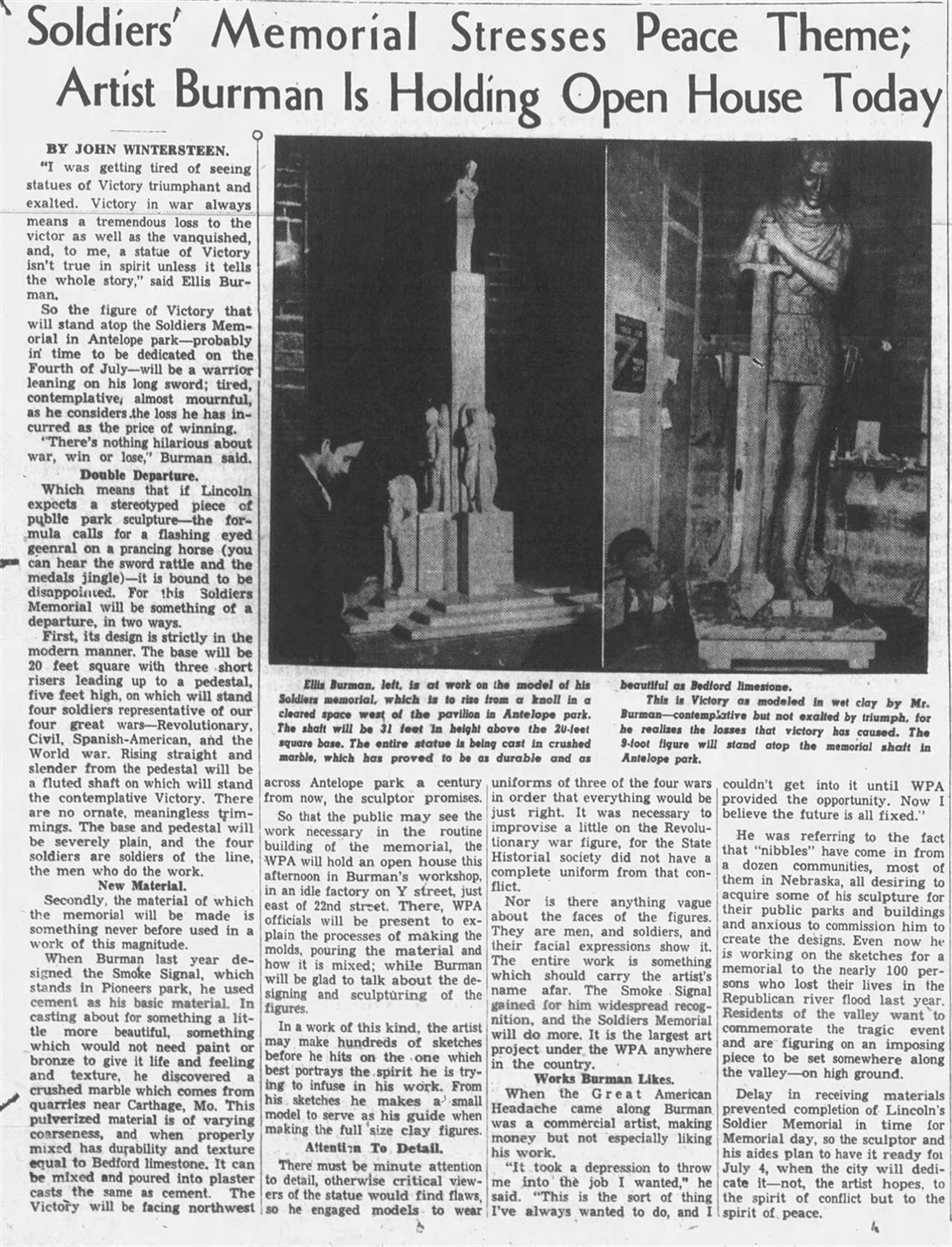
Location
Veterans Memorial Drive, Lincoln 68502 View Map
40.796679, -96.675910
Veterans Memorial Drive ,
Lincoln 68502
Veterans Memorial Drive ,
Lincoln 68502
War and Victory